The Amphiareion of Oropos, a sanctuary named after the mythical hero Amphiaraos, one of the Seven Against Thebes, who foretold the demise of everyone who joined the expedition, was known to most people in the Greek-speaking world in the 4th century BC.
People would go there at least once a year for the Lesser Amphiareia and every five years for the Greater Amphiareia, with their musical, equestrian and sports contests in which actors, scholars and athletes from across Greece, the Greek cities of southern Italy (Magna Graecia) and Asia Minor would participate. Many would visit at other times too, to receive an oracular response and to ask for the advice of Amphiaraos, the chthonic (underground) god, or seek therapy. Then, they would enter the sanctuary from the east, from the grand gallery.
Nowadays, visitors enter the site from the west, but it doesn’t make any difference. Inside the thick pine forest, a small city rises on both sides of the Mavrodilesi creek, also known as Haradra (Gorge). On the one bank are the official buildings – temple, theater, altars, gallery, spas – and on the other, the settlement with its guesthouse, tavernas, agora and the famous clepsydra, one of the two extant ancient memorial water clocks – the other is in Athens’ agora – that operated the same way: a tap emptied the water from a rectangular basin very slowly, keeping the time.
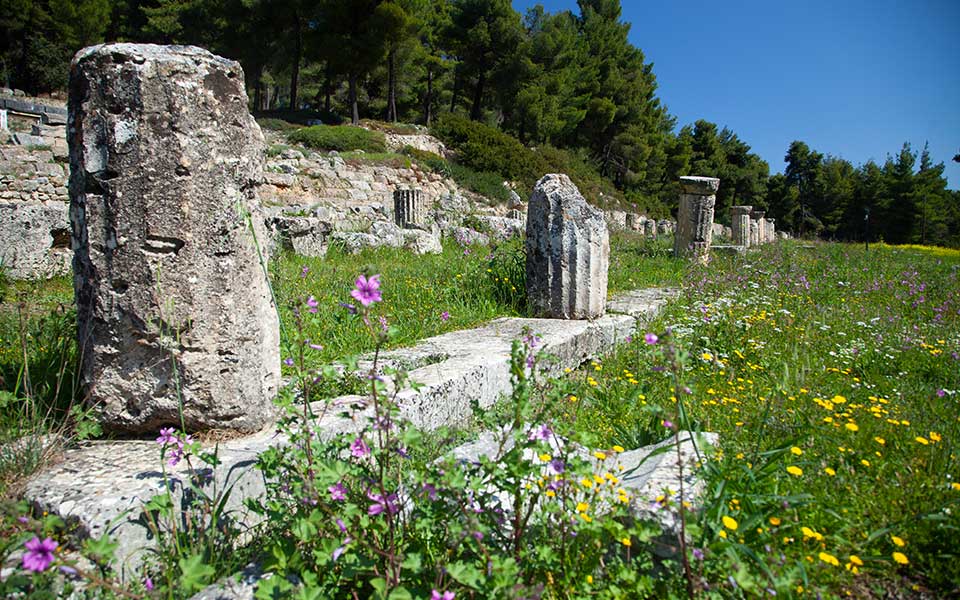
© Olga Charami
The sanctuary was built in the second half of the 5th century BC after an oracle demanded the rebuilding of the derelict Amphiareion of Thebes at Oropos, southeast of Thebes and about 37 kilometers north/northeast of Athens. During the 4th century BC, it became one of ancient Greece’s most important sanctuaries; however, the important port of Oropos changed masters many times over the course of about 400 years, with Athens, Thebes and Eretria, a city on the island of Evia, controlling the city most frequently. John Camp, in his book “The Antiquities of Athens and Attica” (published in Greek by Kardamitsas), says that Oropos changed masters 12 times between 490 BC and the 1st century BC, while also enjoying brief periods of autonomy.
All this happened for Amphiaraos, one of seven mythical, or semi-mythical, rulers from Argos, who led an expedition against Thebes, together with Polynices (the story is detailed in Aeschylus’ play “Seven Against Thebes”). Amphiaraos was killed in the expedition or, as legend has it, Zeus launched a thunderbolt that opened a chasm which swallowed Amphiaraos’ chariot. Thus, he was worshipped as an underground god, with prophetic power, who could also heal body and mind.
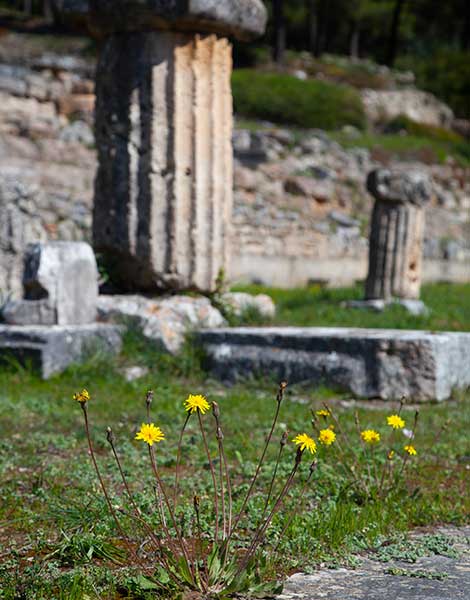
© Olga Charami
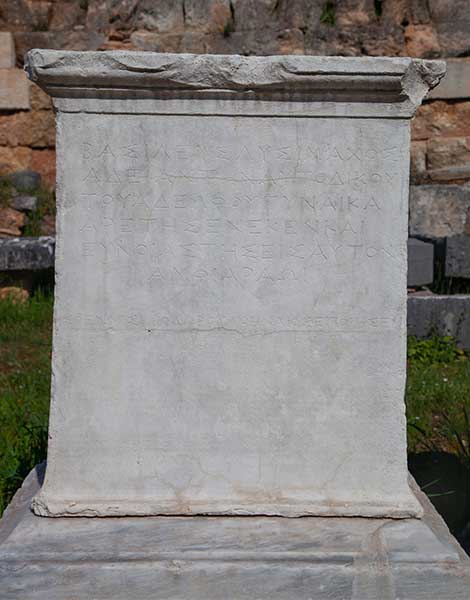
© Olga Charami
Therapeutic pilgrimage
The surviving inscriptions and reliefs of the Amphiareion contain detailed information about the worship and the operation of the sanctuary. All these are in a special room, which, unfortunately, is not open to visitors.
The sanctuary accommodated thousands of pilgrims, who enriched the city. Famous people of those times made valuable offerings and carried out beneficent projects. The worship included sacrifices of rams and involved the worshippers sleeping in the sanctuary, where, during sleep, they were either healed of their ailments or got advice from the god in their dreams. After therapy or the oracle, the faithful dropped coins in the holy spring, which to this day flows next to the altar. According to the ancient tradition, Amphiaraos reappeared at the spring as an underground god after disappearing on the battlefield.
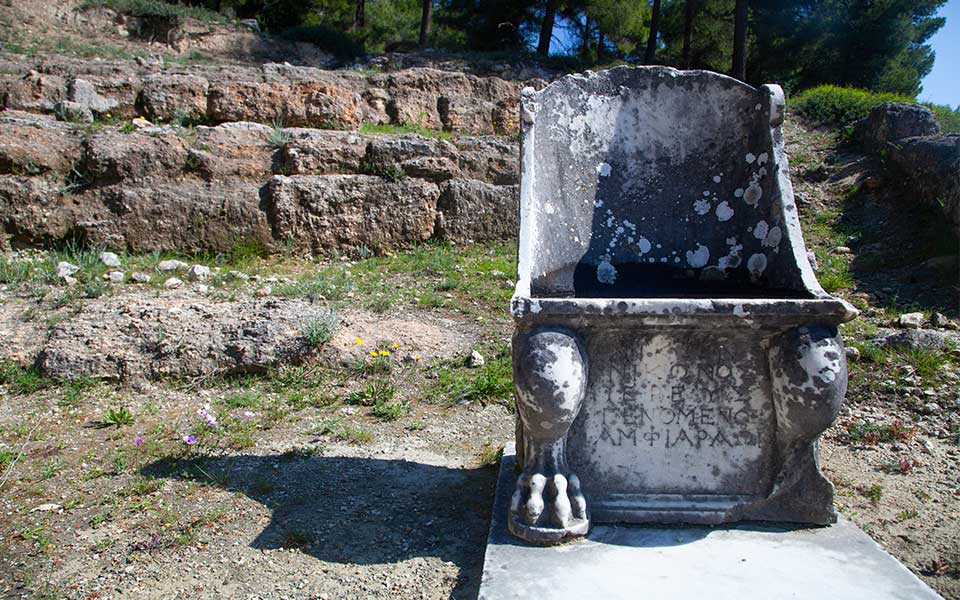
© Olga Charami
Moreover, the faithful filled the sanctuary and the temple with offerings which they placed on “the altar in front of Amphiaraos’ statue, hung on the walls or the wooden partitions… even stuck with wax on the statue of the god,” archaeologist Vassileios Petrakos mentions in the excavation archives.
The offerings were usually of small value, “bought from the stores on the bank across from the temple: small clay statuettes, like our dolls… marble statuettes or miniatures of body parts, often from precious metals, like the votive offerings we see in contemporary churches, feet, arms, breasts, depending on which body part the god healed,” Petrakos adds.
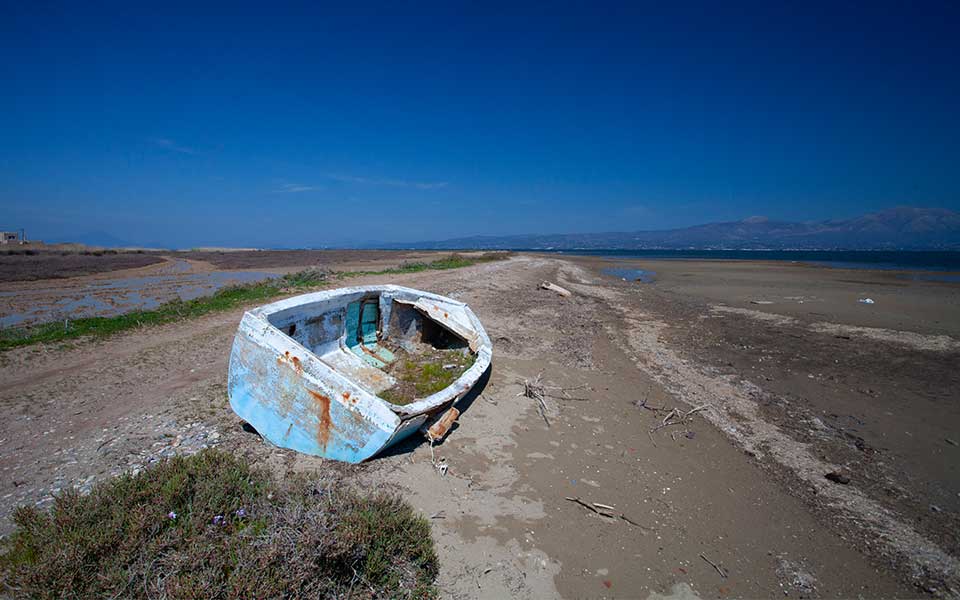
© Olga Charami
The theater thrones
Inside the ancient theater, built in the 2nd century BC with pilgrims’ offerings, an ornate flower is sculpted into one of the thrones. Next to it, a wild orchid has sprung up and, a little further away, daisies and windflowers – nature imitating art. The wooden seats have disappeared, but the five marble thrones for VIPs are in excellent condition, while the impressive colonnade of the proscenium – the front of the stage – has been restored, thanks to the efforts of two nonprofit organizations, Diazoma (Tier) and Monumenta. Last summer, a performance took place in the theater for the first time in centuries, jointly organized by the Ministry of Culture and the Michael Cacoyannis Foundation.
Tip: Talk to the groundsman
It is rather strange that so few people know about this beautiful place nowadays.
Nature in springtime is spectacular and you will find yourselves walking in the enchanting forest, invigorated by the scent of pine. Besides the monuments, you will see wild orchids, anemones and everlasting flowers, lizards will dart across your path and you will be serenaded by the songs of hoopoes, goldfinches and greenfinches.
Mr Giorgos, the groundskeeper, is very knowledgeable of the area. He will talk to you about the flora and fauna, the archaeological excavations still under way, the problems archaeologists face when the creek floods, the restorations, the precious finds and the casts they are used to make.
This article was first published in Greek on kathimerini.gr.












